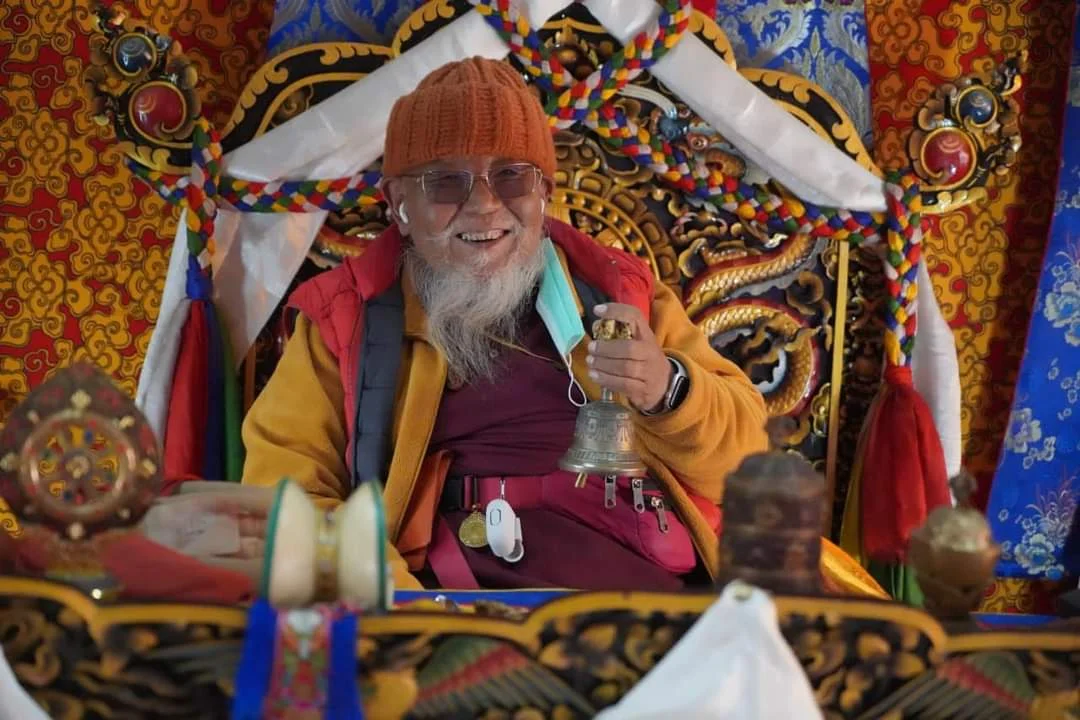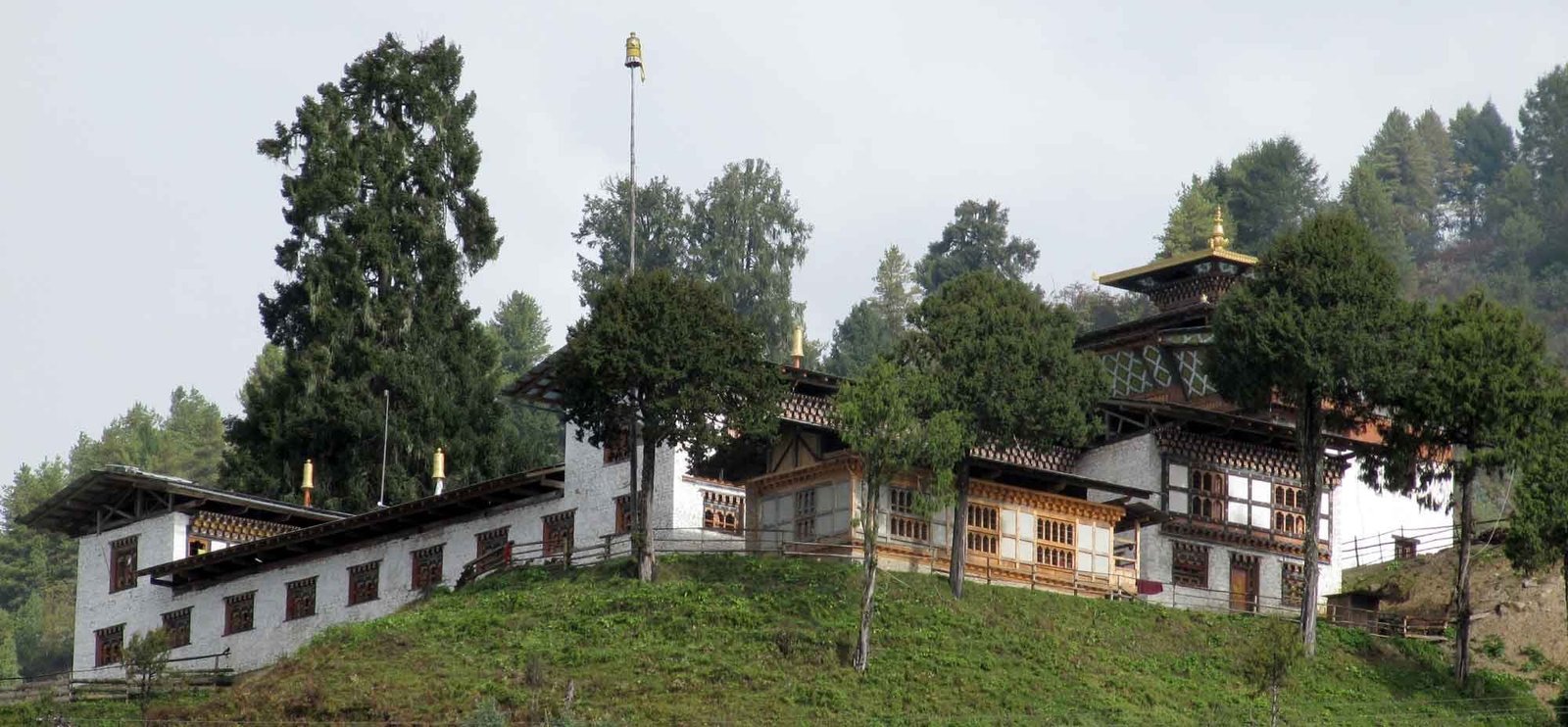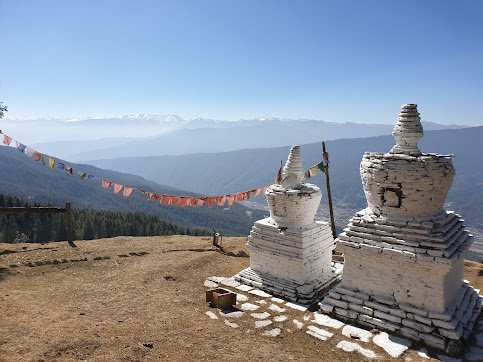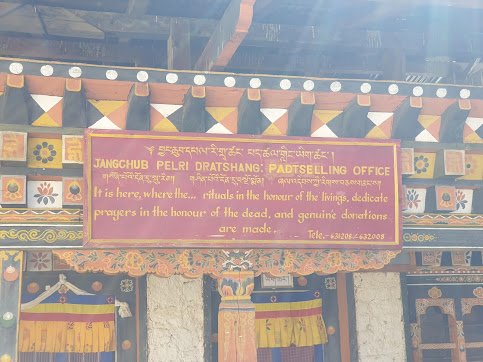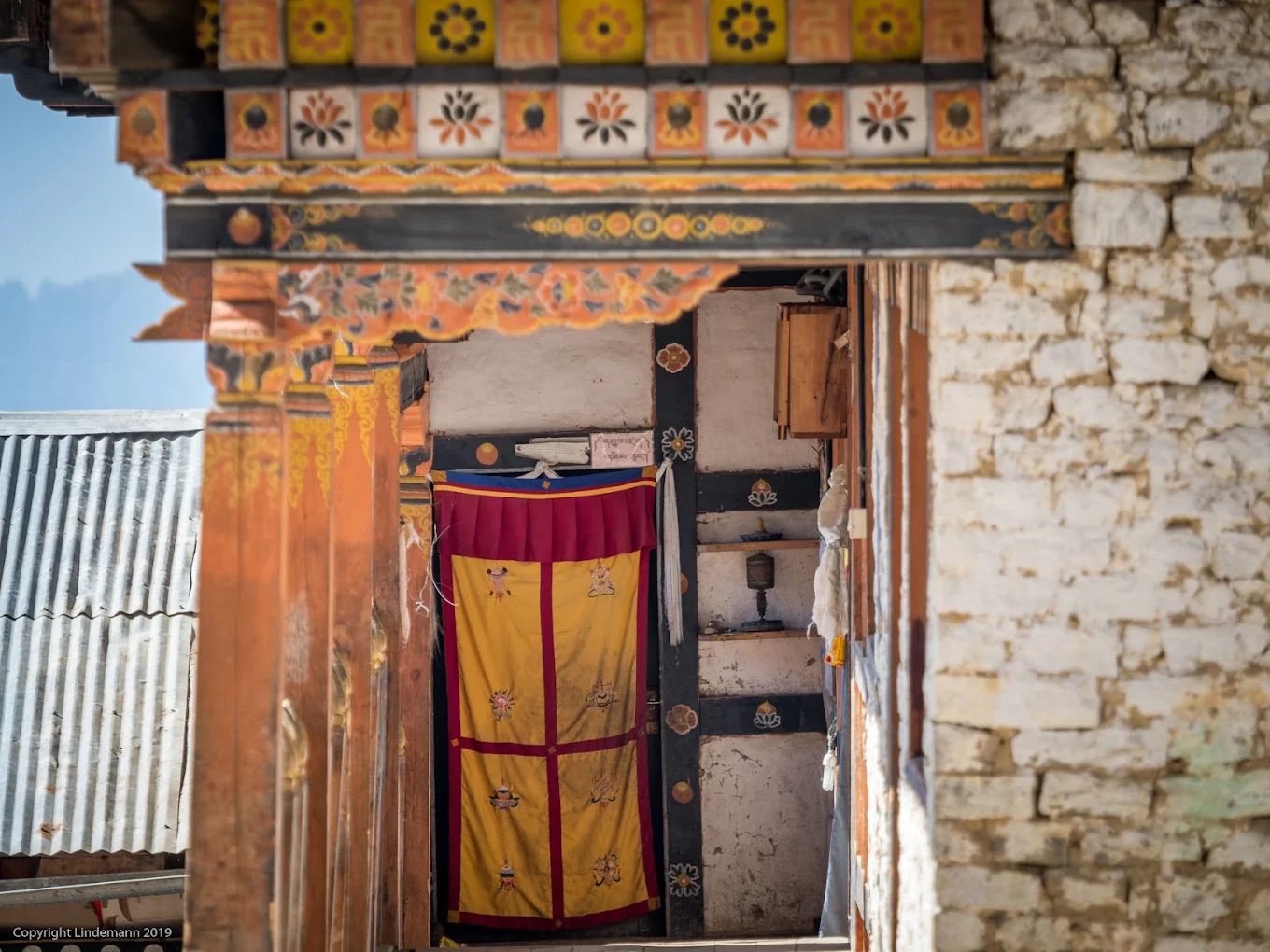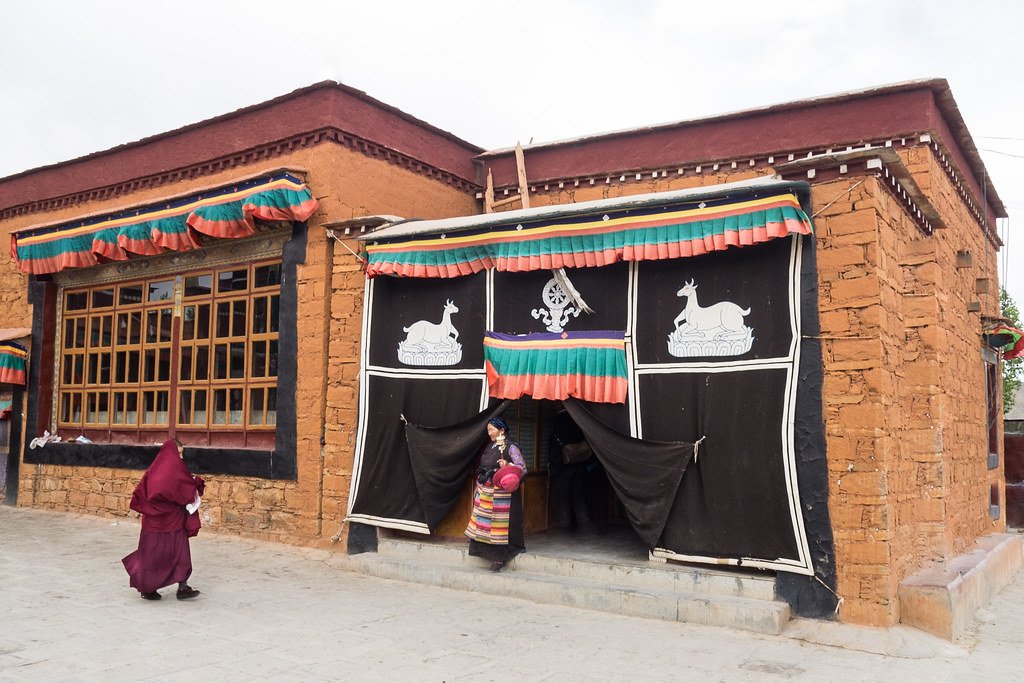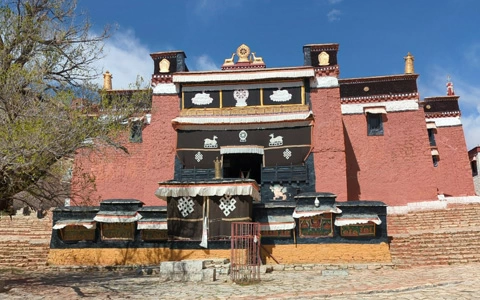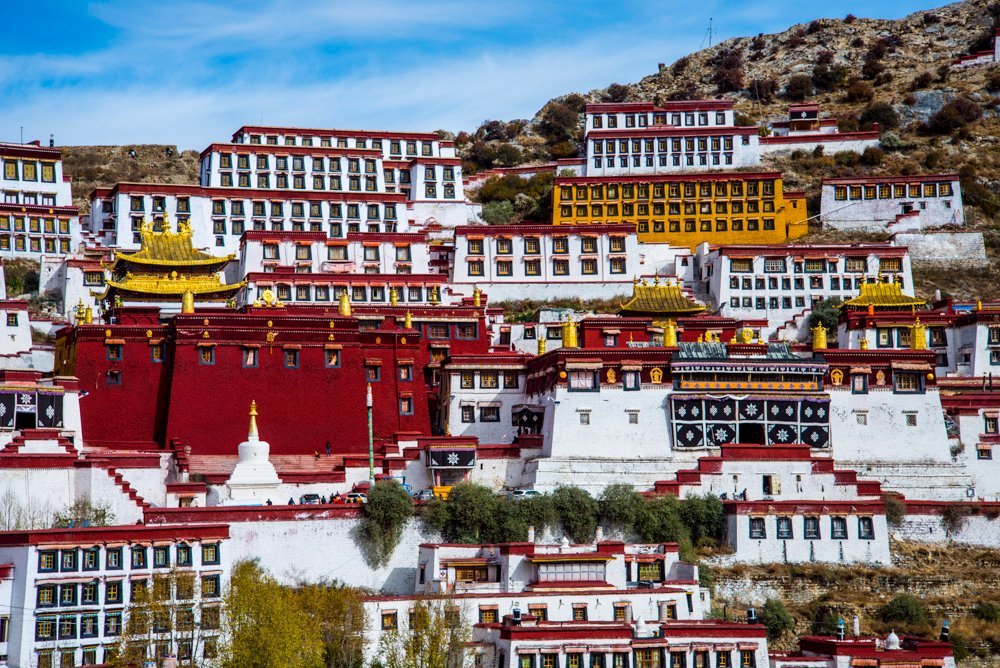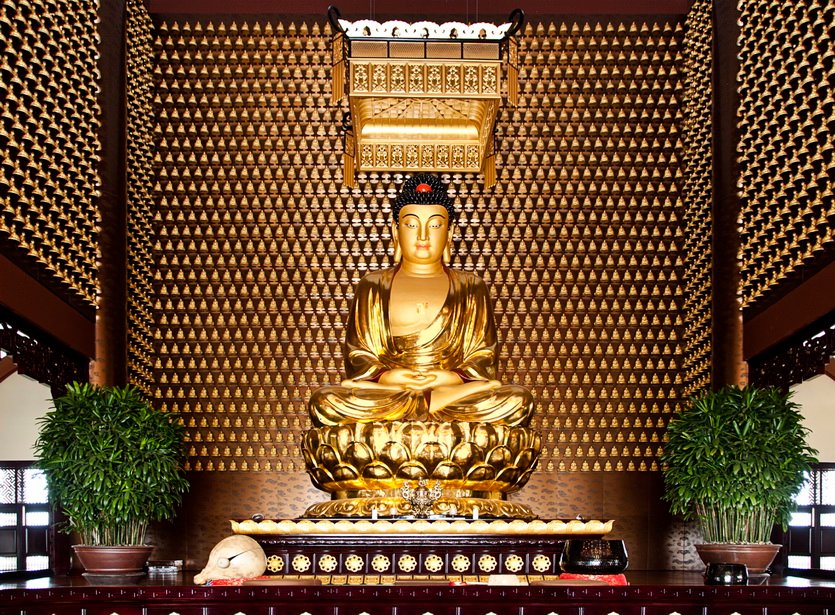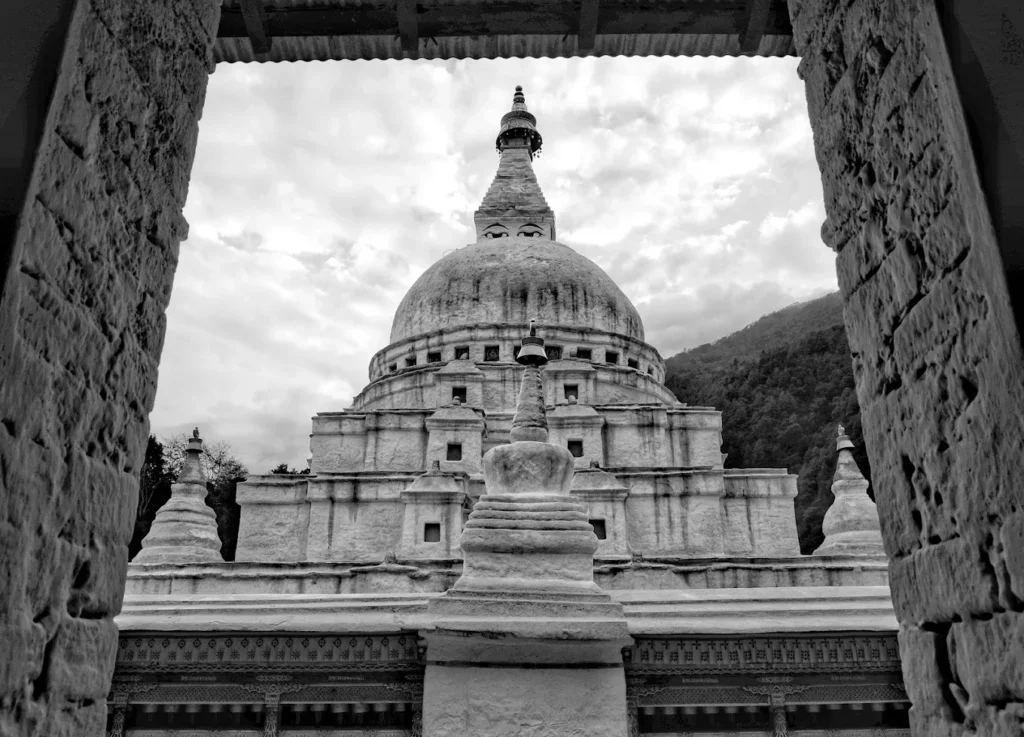Padtselling Monastery: The Prophesied Haven of Bumthang’s Drukpa Kagyu Spirit
Rising majestically on a forested ridge east of Kurje Lhakhang, where the morning mist weaves through a landscape adorned with wildflowers, Padtselling Monastery emerges as a serene sanctuary, its stone walls catching the dawn’s gentle light. Within the sacred main temple (lhakhang), monks chant the Om Mani Padme Hum mantra, their voices resonating around a statue of Amitabha Buddha, fulfilling an ancient prophecy. Established in 1769 by Drupthob Namgyal Lhundup, this Drukpa Kagyu monastery is celebrated for its divine guidance from the Jowo Statue in Lhasa and its blooming Dongdola flowers. The air carries the scent of juniper incense, lit during prayer sessions, while prayer flags flutter against the breeze, blessing the valley below. From its elevated perch in Bumthang Dzongkhag, the sweeping vista of the Choekhor Valley unfolds, connecting the monastery to Bhutan’s spiritual heart. This sacred retreat invites travelers, seekers, and scholars to ascend its trails and immerse themselves in the enduring legacy of Drukpa Kagyu devotion.
Whispers of the Prophecy: Overview and Significance
Introduction to Padtselling Monastery
Padtselling Monastery, situated on a ridge east of Kurje Lhakhang in Bumthang Dzongkhag, Bhutan, at an elevation of approximately 2,800 meters, stands as a revered Drukpa Kagyu sanctuary, renowned for its prophesied location and natural beauty. A half-day hike from Jakar or the Swiss Guest House reveals a tranquil retreat where the fragrance of wildflowers and the sound of monastic chants create a peaceful ambiance. Founded in 1769 by Drupthob Namgyal Lhundup, the first Petseling Trulku, it embodies Bhutan’s Drukpa Kagyu heritage, blending meditation with divine guidance. A cultural and spiritual gem, the monastery weaves history, prophecy, and Himalayan reverence into a timeless refuge.
Historical Journey
Padtselling Monastery’s history began in 1769 when Drupthob Namgyal Lhundup, inspired by a vision from the Jowo Statue in Lhasa, established it east of Kurje Lhakhang. The statue, during Namgyal’s pilgrimage, instructed him to build a monastic seat named Jangchub Pelri, prophesying his dreams’ fulfillment. Constructed with support from the Penlop of Trongsa and the dzongpen of Jakar, the monastery was built in the dzong style, featuring a two-story structure. Over time, it housed statues of Amitabha Buddha, Guru Rinpoche, and Vajrasattva, with additional chortens and scriptures added. Community efforts, including a significant restoration, have preserved its sanctity, maintaining its role as a pilgrimage site.
Cultural Significance
- Drukpa Kagyu Devotion: Rooted in the Drukpa Kagyu lineage, the monastery venerates Amitabha Buddha, Guru Rinpoche, and Vajrasattva, emphasizing meditation and prophecy.
- Bhutanese Heritage: A spiritual anchor, it preserves rituals like mantra recitation and tsechu ceremonies, reflecting national identity.
- Pilgrimage Legacy: The Jowo prophecy and wildflowers enhance its sacred role.
- Regional Influence: Pilgrimages draw devotees from Bumthang and central Bhutan, fostering community ties.
Unique Legacy
- Ridge Perch: At 2,800 meters, its view of Choekhor Valley distinguishes it among Bhutan’s monasteries.
- Prophetic Site: The Jowo Statue’s guidance holds sacred potency, a verified historical narrative.
- Floral Beauty: The Dongdola flowers symbolize divine welcome, a unique feature.
- Cultural Symbol: Its prophesied status mirrors Bhutan’s spiritual depth.
Community and Global Impact
- Local Devotion: The monastery hosts prayers and festivals, strengthening Bumthang’s Drukpa Kagyu ties.
- Pilgrimage Hub: Visitors are drawn by the prophecy and floral scenery.
- Global Appeal: International meditators seek its spiritual and natural allure.
- Cultural Dialogue: Shared rituals unite Bhutanese and global visitors.
Modern Relevance
- Spiritual Retreat: Padtselling offers a haven for mindfulness in its ridge seclusion.
- Cultural Preservation: It safeguards Drukpa Kagyu practices, ensuring Bhutan’s heritage endures.
- Pilgrimage Influence: The prophecy attracts global spiritual seekers.
Historical Anecdotes
- Jowo’s Voice: The statue’s prophecy in Lhasa inspired its founding.
- Namgyal’s Vision: His 1769 construction fulfilled divine guidance.
- Floral Miracle: Dongdola blooms enhance its mystique.
Social Role
- Community Hub: Festivals and prayers unite Bumthang’s Buddhists.
- Pilgrimage Center: Monks guide devotees in ritual walks.
- Charitable Spirit: Communal gatherings reflect Drukpa Kagyu compassion.
Artistic Influence
- Thangka Art: Murals of Amitabha inspire Bhutanese artists.
- Cultural Icon: The Choekhor view graces local imagery.
- Festival Art: Prayer flags showcase Bhutanese craftsmanship.
Padtselling Monastery’s ridge-top aerie, where Drupthob Namgyal Lhundup fulfilled a divine prophecy, weaves a narrative of devotion and beauty that defines Bhutan’s Drukpa Kagyu legacy. From its 1769 founding to its role as a pilgrimage site, the monastery’s history resonates with the serenity of Choekhor Valley, uniting monks and pilgrims. Its sacred halls and scenic trails set the stage for an architectural tapestry that mirrors its Himalayan soul. As we delve into its physical and spiritual features, Padtselling’s design reveals how its prophesied beauty nurtures profound faith and reflection.
Crafted by the Ridge: Architectural and Spiritual Features
Iconic Design
Padtselling Monastery’s architecture blends Drukpa Kagyu elegance with its ridge setting, creating a sanctuary that harmonizes with Bumthang’s forested landscape. Stone walls and a two-story wooden structure, adorned with prayer flags, rise from the 2,800-meter elevation, reflecting the dzong style. The compact layout, centered on the main lhakhang, prioritizes ceremonial function, with courtyards fostering pilgrimage. Its perch east of Kurje Lhakhang enhances its sacred resonance, tying the monastery to Bhutan’s Himalayan ethos.
Key Structures
- Main Lhakhang: The spiritual core, housing Amitabha Buddha’s statue, built in 1769.
- Jangchub Chorten: Contains Buddha stupas, Kagyur, and Nyingma Gyud Bum, added over time.
- Monk Quarters: Residential areas for monks, restored with community support.
- Prayer Flag Poles: Structures strung with flags, dotting the ridge.
Worshipped Statues
- Amitabha Buddha: A bronze statue, symbolizing infinite light, radiates spiritual peace.
- Guru Rinpoche (Padmasambhava): A gilt statue, embodying guidance, stands prominently.
- Vajrasattva: A statue representing purification, flanks the altar.
- Spiritual Role: Monks offer butter lamps to Amitabha, seeking enlightenment.
Materials and Techniques
- Construction: Stone and timber, joined with traditional methods, ensure durability.
- Artistry: Murals and chorten carvings, crafted by local artisans, reflect Drukpa Kagyu style.
- Cultural Essence: The dzong design prioritizes pilgrimage simplicity, distinct from fortresses.
Signature Elements
- Ridge View: The 2,800-meter perch offers vistas of Choekhor, a unique feature.
- Jangchub Chorten: The stupas anchor the prophesied narrative.
- Prayer Flags: Fluttering flags carry blessings across the valley.
Lesser-Known Features
- Ancient Murals: Paintings depict Buddha’s life, preserved from the 18th century.
- Dongdola Flowers: Wild blooms symbolize divine welcome.
- Old Prayer Wheel: A weathered mani wheel, in use since the 18th century.
Preservation Efforts
- Restoration: Community efforts rebuilt the lhakhang, preserving original design.
- Challenges: Ridge erosion affects stonework, requiring maintenance.
- Modern Additions: Solar lights enhance evening accessibility.
Environmental Integration
- Ridge Harmony: The monastery’s design respects Bumthang’s ecosystem.
- Eco-Practices: Monks maintain trails and protect wildflowers.
- Wildlife Haven: Birds and cuckoos nest nearby, enhancing serenity.
Artisan Narratives
- Mural Painters: Local artists restored murals, preserving Drukpa Kagyu art.
- Stone Masons: Craftsmen built the chorten, blending tradition.
- Flag Weavers: Nuns crafted prayer flags, embedding blessings.
Symbolic Details
- Prayer Flags: Five colors balance elements, spreading dharma.
- Chortens: Represent Buddha’s enlightenment, guiding pilgrims.
- Statues: Reflect Drukpa Kagyu peace and purification.
Landscape Integration
- Ridge Perch: Enhances meditative focus with valley views.
- Choekhor Vista: The valley mirrors inner tranquility.
- Wildflower Meadows: Provide solitude and spiritual resonance.
Padtselling Monastery’s stone lhakhang and sacred courtyards, overlooking Choekhor Valley, are more than architectural marvels; they are sanctuaries for the Drukpa Kagyu practices that define its spiritual soul. The statue of Amitabha Buddha, illuminated by butter lamps, anchors rituals that connect monks to Bhutan’s spiritual lineage. These hallowed spaces, alive with chants and wildflower scents, invite visitors to engage with the monastery’s living traditions. As we explore its rituals, Padtselling’s role as a meditative and prophesied retreat comes to life, guiding devotees toward peace and enlightenment.
Rites of the Prophecy: Rituals and Practices
Daily Sacred Rites
- Morning Chanting: Monks recite the Om Mani Padme Hum mantra at dawn, fostering compassion.
- Meditation Sessions: Silent meditation, held twice daily, centers on Mahamudra practices.
- Butter Lamp Offerings: Devotees light lamps before Amitabha, praying for merit.
Unique Practices
- Cave Meditation: Monks meditate near the prophesied ridge, honoring Namgyal’s vision.
- Wildflower Rituals: Ceremonies celebrate the Dongdola blooms, a Drukpa Kagyu tradition.
- Signature Ritual: Offering khata scarves during chorten circuits, tied to the prophecy.
Festival Traditions
- Padtselling Tshechu (dates vary): A local festival with prayers and circumambulation.
- Lhabab Duchen: Ceremonies honor the Buddha’s descent, with chorten circuits.
- Losar (Bhutanese New Year): Monks perform purification rites, blessing visitors.
- Statue Veneration: Amitabha’s statue is adorned with silk during festivals.
Visitor Engagement
- Accessible Rituals: Visitors can join chants or circumambulate, guided by monks.
- Offerings: Butter lamps and prayer flags, available at the monastery, invite participation.
- Drukpa Etiquette: Bow before statues and maintain silence during meditation.
Spiritual Community Roles
- Monastics: Around 20–30 monks maintain the site and lead rituals.
- Lamas: Senior monks guide chorten rituals and pujas.
- Lay Devotees: Bumthang villagers maintain trails and support events.
Interfaith Connections
- Syncretic Practices: Some blend Drukpa rites with local traditions, honoring spirits.
- Outreach: Festivals welcome diverse faiths, fostering unity.
- Education: Monks share Drukpa Kagyu teachings with visitors.
Ritual Symbolism
- Butter Lamps: Represent wisdom illuminating prophecy.
- Khata Offerings: Symbolize purity and devotion.
- Chorten Circuits: Signify spiritual merit.
Seasonal Variations
- Spring Rites: Vibrant with Dongdola blooms, ideal for Padtselling Tshechu.
- Winter Retreats: Cold enhances ridge meditation focus.
- Monsoon Chants: Rain amplifies mantra resonance.
Monastic Life
- Daily Routine: Monks rise at 5:00 AM for chants, meditation, and maintenance.
- Community Service: Monks guide pilgrims and protect the site.
- Training Hub: Monks learn Drukpa Kagyu practices, supporting Bumthang’s faith.
Padtselling Monastery’s rituals, from the Om Mani Padme Hum mantra to chorten circuits, breathe life into its ridge sanctuary, connecting devotees to the Drukpa Kagyu lineage. The monastery’s spiritual practices, rooted in Bhutan’s prophesied faith, invite visitors to engage with its sacred heart, whether through chants or wildflower rituals. For travelers, these rites offer a glimpse into Bumthang’s sacred traditions, accessible within its forested grounds. As we turn to visitor information, Padtselling’s ridge setting guides practical planning, ensuring a meaningful journey to this prophesied retreat.
Journey to the Ridge: Visitor Information
Navigating to Padtselling Monastery
- Location: Bumthang Dzongkhag, 2,800 meters, accessible via a trail east of Kurje Lhakhang, near Jakar.
- Landmarks: Near the Swiss Guest House and wildflower meadows, with Dzongkha and English signs.
- Routes: Hike from Jakar or the Swiss Guest House (2.5 hours) or drive to the trailhead.
Address of Padtselling Monastery
- Dzongkha: Padtselling Goenpa, Bumthang Dzongkhag, Bhutan.
- English: Padtselling Monastery, Bumthang District, Bhutan.
Visiting Hours and Etiquette
- Hours: Open daily, 6:00 AM–5:00 PM, with ceremonies varying by schedule.
- Etiquette: Dress modestly, remove shoes before lhakhang, and avoid disturbing rituals.
- Drukpa Custom: Offer butter lamps with both hands and bow to statues.
Transport Options
- By Foot: Hike from Jakar or the Swiss Guest House (2.5 hours, moderate difficulty).
- By Vehicle: Drive to the trailhead, then walk the uphill path.
- By Horse: Local guides may offer horses, arranged at Jakar.
Accessibility and Safety
- Mobility: Steep trails may challenge those with mobility issues; no ramps available.
- Safety: Stable paths with guideposts; carry water and layers for altitude.
- Tips: Wear sturdy hiking boots and bring a packed lunch.
Amenities and Surroundings
- Facilities: Basic restrooms near the monastery; no shops on-site.
- Nearby: Kurje Lhakhang and Jambay Lhakhang, within 5–10 km, offer cultural experiences.
- Dining: Picnic areas encourage packed meals, with options in Jakar.
Immersive Visitor Tips
- Best Timing: Early morning hikes offer clear views and monk chants.
- Sensory Moments: Inhale wildflower-scented air and hear valley echoes.
- Statue Connection: Offer butter lamps to Amitabha and reflect briefly.
- Festival Planning: Attend Padtselling Tshechu for chorten circuits.
Nearby Cultural Experiences
- Kurje Lhakhang: An ancient temple, 5 km away, holds Guru Rinpoche’s imprint.
- Jambay Lhakhang: A 7th-century site, 10 km away, offers sacred relics.
- Jakar Dzong: A fortress, 8 km away, blends spirituality and history.
Photography Tips
- Best Angles: Capture the lhakhang at sunrise for golden light.
- Respectful Shots: Avoid photographing rituals without permission.
- Scenic Views: The Choekhor Valley offers stunning panoramas.
- Equipment: A lightweight camera suits the trek.
The journey to Padtselling Monastery, guided by Bumthang’s ridge trails, is a pilgrimage that blends spiritual discovery with prophesied reverence, inviting visitors to engage with its Drukpa Kagyu traditions. The monastery’s lhakhang and courtyards, vibrant with chants and wildflowers, offer a window into Bhutan’s sacred heart, where prophecy feels alive. Beyond its ridge beauty, Padtselling’s deeper cultural and spiritual significance enriches the experience, revealing the essence of Himalayan Buddhism. As we explore these insights, the monastery’s role as a beacon of faith and prophecy comes into sharper focus, deepening our connection to its sacred legacy.
Insights of the Ridge: Cultural and Spiritual Reflections
Drukpa Kagyu Philosophy
Padtselling Monastery embodies Drukpa Kagyu’s core: compassion and wisdom through meditation and prophecy. Amitabha Buddha, Guru Rinpoche, and Vajrasattva inspire devotees, reflected in chants and chorten rituals. Mahamudra teachings emphasize direct realization, guiding monks toward enlightenment.
Environmental Spirituality
The monastery’s ridge perch ties it to Himalayan reverence for nature. Choekhor’s wildflowers and valley views foster meditative calm, with offerings honoring local spirits. The landscape invites reflection on harmony with the natural world.
Artistic Symbolism
Murals depict Amitabha’s peace, symbolizing enlightenment. Chortens represent the Buddha’s mind, while prayer flags balance elements. These elements weave Drukpa Kagyu ideals into the monastery’s aesthetic.
Community Resilience
Founded by Drupthob Namgyal Lhundup’s followers, Padtselling reflects Bhutanese perseverance through time. Its preservation showcases collective faith, sustained by community efforts.
Environmental Stewardship
The monastery’s slopes foster Buddhist eco-ethics. Monks protect trails and wildflowers, urging visitors to honor the ridge’s sanctity.
Meditative Practices
Drukpa Kagyu meditation, including Mahamudra, cultivates awareness. The lhakhang offers spaces for retreat, guided by monks, amplifying inner peace.
Cultural Narratives
- Jowo’s Legacy: The statue’s prophecy inspires devotion.
- Namgyal’s Vision: His 1769 founding links past and present.
- Festival Lore: Padtselling Tshechu carries Drukpa Kagyu traditions.
Historical Context
- Drukpa Roots: The Jowo prophecy shaped its identity.
- Namgyal’s Era: The 1769 construction strengthened its role.
- Community Continuity: Restoration ensures its legacy.
Reflecting on the Journey
Padtselling Monastery, cradled on Bumthang’s sacred ridge, is a sanctuary where prophecy meets wisdom. Its lhakhang and courtyards, alive with Amitabha’s legacy, embody Bhutan’s Drukpa Kagyu soul, inviting all to seek enlightenment. The monastery’s trails, worn by centuries of pilgrims, tell a story of devotion, rooted in Himalayan faith. Whether meditating before Guru Rinpoche, circumambulating the chortens, or tracing Bhutan’s prophesied heritage, visitors find a space to reflect and connect. As you descend, the wildflower scent and prayer flags’ flutter linger, a reminder that peace is always within reach.
